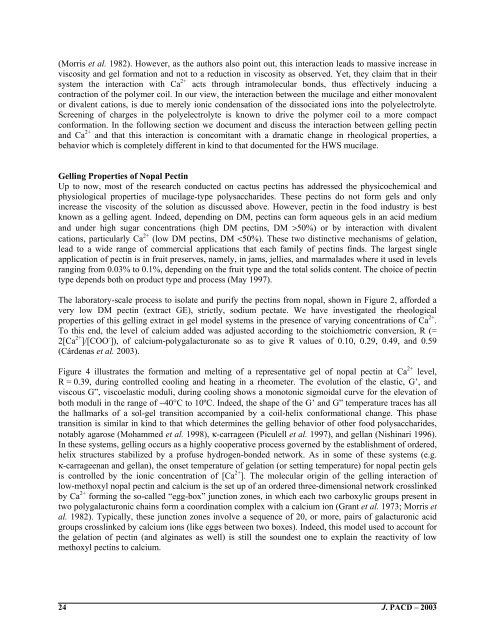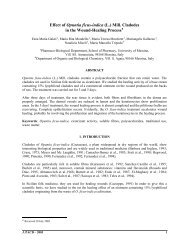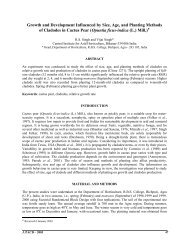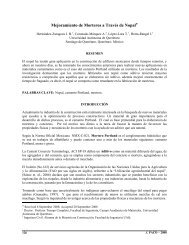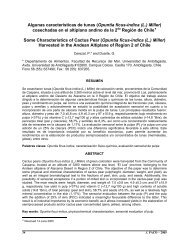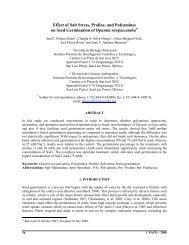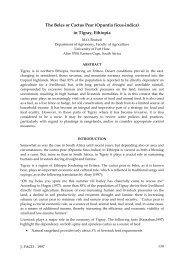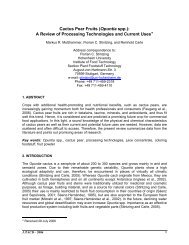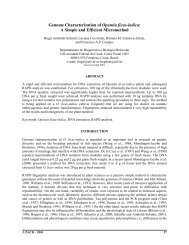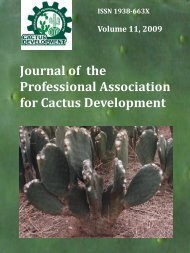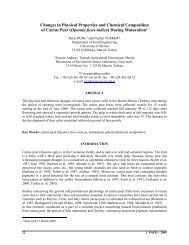Pectins from Opuntia spp.: A Short Review
Pectins from Opuntia spp.: A Short Review
Pectins from Opuntia spp.: A Short Review
Create successful ePaper yourself
Turn your PDF publications into a flip-book with our unique Google optimized e-Paper software.
(Morris et al. 1982). However, as the authors also point out, this interaction leads to massive increase inviscosity and gel formation and not to a reduction in viscosity as observed. Yet, they claim that in theirsystem the interaction with Ca 2+ acts through intramolecular bonds, thus effectively inducing acontraction of the polymer coil. In our view, the interaction between the mucilage and either monovalentor divalent cations, is due to merely ionic condensation of the dissociated ions into the polyelectrolyte.Screening of charges in the polyelectrolyte is known to drive the polymer coil to a more compactconformation. In the following section we document and discuss the interaction between gelling pectinand Ca 2+ and that this interaction is concomitant with a dramatic change in rheological properties, abehavior which is completely different in kind to that documented for the HWS mucilage.Gelling Properties of Nopal PectinUp to now, most of the research conducted on cactus pectins has addressed the physicochemical andphysiological properties of mucilage-type polysaccharides. These pectins do not form gels and onlyincrease the viscosity of the solution as discussed above. However, pectin in the food industry is bestknown as a gelling agent. Indeed, depending on DM, pectins can form aqueous gels in an acid mediumand under high sugar concentrations (high DM pectins, DM >50%) or by interaction with divalentcations, particularly Ca 2+ (low DM pectins, DM


